One of the malformations of the skin are moles. They can be either congenital or acquired during life. For example, children under one year old have practically no moles.

Laser mole removal: consequences of spots degenerating into melanoma
In themselves, such accumulations of pigment do not cause discomfort. But there are a lot of questions associated with them, one of which worries many of us, namely: are moles dangerous? There is no clear answer. Since moles are safe until, as a result of exposure to certain factors (for example, solar radiation or injury), they degenerate into melanoma. And this is already a malignant tumor. That is why, if moles are located in a place where they can easily and often be exposed to various influences, then they are advised to be removed. But this should be done only after preliminary consultation with a specialist.
Who can tell me whether a mole is dangerous, and what are the indications for its removal?
First of all, you should consult a dermatologist for advice. He will carry out the necessary examination and determine whether additional consultation with an oncologist is required, as well as whether removal of the mole is necessary. There are certain signs that indicate that you urgently need to contact a specialist and consult about removing a tumor from the skin. So, these include:
- increase in the size of the mole;
- change in the color of a mole or its contours;
- hair loss from the mole (if any);
- redness of the skin around the mole;
- discharge of an unclear nature;
- pain or discomfort at the site of the mole.
In these cases, immediate consultation with a specialist is required.
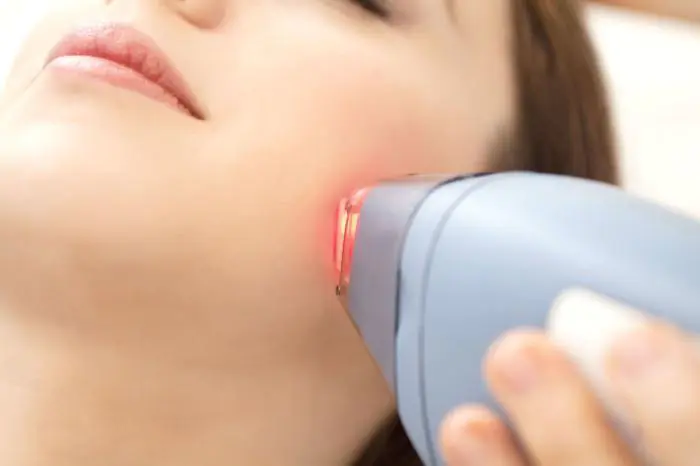
Ways to remove moles
There are several methods for removing moles. And all of them are as safe as possible for health and relatively painless. Moles can be removed by surgery, nitrogen, electrocautery, or laser. The success of the procedure depends on how correctly the method for removing moles in certain places is chosen. It should be noted that before entrusting this manipulation to a specialist, it is necessary to check that he has all the necessary documents and certificates confirming his qualifications and ability to work with the equipment. And also read customer reviews about this clinic. Under no circumstances should you carry out the procedure in a beauty salon - only a doctor with the appropriate medical education should remove moles.
Mole removal methods: laser
It should be noted that doctors prefer laser removal of moles. The following data speaks in its favor:
- in most cases, the result is achieved after one procedure;
- the site of mole removal heals very quickly, it will take no more than a week;
- no bleeding occurs during removal;
- and most importantly, complications occur very rarely.
However, after an examination, the doctor may choose another method for removing unwanted spots.
Other methods for removing moles
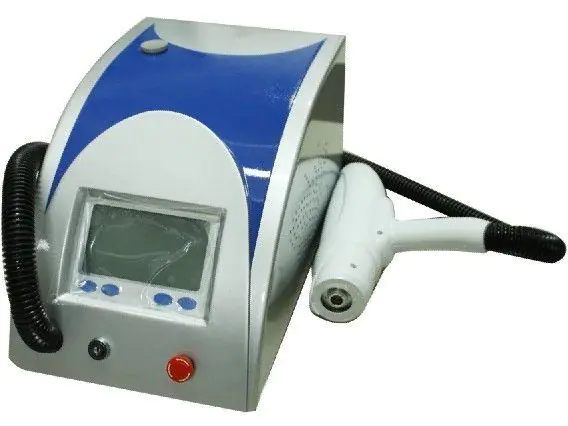
When removing moles with nitrogen, the result is not always achieved the first time, especially if the spot was large. And at the same time, healthy areas of the skin are often damaged. When removing moles using electric current, the procedure occurs quickly, and the moles disappear the first time. But at the same time, scars often remain at the site of removal. Large moles or malignant formations are removed surgically. This procedure requires stitches, and in most cases, bleeding from the wound is possible, which is very undesirable. To make sure that this procedure is safe, you can read the information given in our article, which tells in detail about mole removal. The consequences and photos after such manipulations are also shown below.
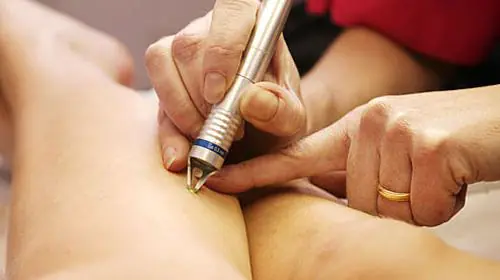
How does the laser mole removal procedure work?
If a mole causes discomfort or you simply don’t like its appearance, but, in general, it does not cause any suspicion, you should contact a good cosmetology clinic. The one where they practice the procedure of removing moles using a laser. These modern installations are practically safe. Laser mole removal itself does not take much time and proceeds as follows: first, local anesthesia is applied around the treatment site. Then, in fact, the laser acts on the mole. In this case, all layers of the formation are gradually removed. The laser allows you to produce precise effects at the required depth, as well as control the strength of the beam. If the mole is small, then, at the client’s request, pain relief may not be performed. We can say that the most effective solution to the problem in question, if it is cosmetic in nature, is precisely the removal of moles with a laser. The consequences, if we talk about the side effects of such manipulation, are practically not visible. This is achieved due to the fact that neither germs nor infection can enter the removal site, since nothing except the laser beam comes into contact with the mole. It is also important that there are no scars or scars left at the site of removal. There will only be a small depression present for a while, which will soon disappear.
Skin care after mole removal

To completely get rid of an unwanted spot using the above method it will take about 5 minutes. And after removing a mole with a laser, care is required for 14 days. It includes several simple procedures. Please note that a dark crust forms at the site where the mole was removed. In the first days, it is especially important that water and cosmetics do not come into contact with this damaged area. The only thing you can apply is sunscreen with a high SP factor. This must be done so that the crust does not get wet or peel off, and so that germs do not get into the wound. Dried tissue should not be removed under any circumstances; it should come off on its own - this will guarantee that there will be no scar or scar left at the site of the procedure. On the left you can see the photo after laser removal of a mole; as you can see, this is an absolutely smooth area of skin.
How else is it recommended to care for your skin after mole removal?

So, immediately after the crust falls off, the skin underneath will be a soft pink color. It is very important to protect this area from exposure to ultraviolet rays. You can cover this area with thick clothing, but if this is not possible, you should be sure to lubricate the operated area and the area around it with sunscreen. In this case, be sure to use a high-quality product with a high degree of protection. If this is not done, the skin may acquire a darker shade. Also, do not scratch the wound or apply any ointment. All care products, if required, must be prescribed by a doctor. Keep in mind that getting alcohol solutions on the wound site is considered very dangerous, as it can cause severe irritation. You should also not drink alcoholic beverages for 7 days after mole removal.
Mole removal: consequences, reviews, recommendations
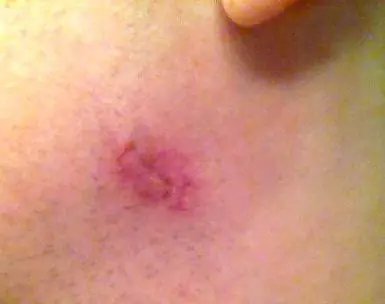
However, every procedure can have undesirable consequences, no matter how safe it is. Therefore, it is very important that this mini-operation is performed by an experienced doctor in a specialized medical institution. Even seemingly simple removal of moles with a laser can have negative consequences. Of course, every patient wants to avoid them, so after the procedure it is important to follow all the doctor’s recommendations regarding the use of ointments, medications, sun protection and the like. And also immediately contact the clinic if after the mini-operation you notice any discharge, redness, etc. (we will tell you more about the symptoms later). Of course, most patients have very successful laser mole removal. Consequences often arise when the patient does not comply with basic rules of care. If you did everything correctly, but a scar has formed at the site of removal, you need to start using emollients - creams or oils. Cocoa butter, which can be purchased at any pharmacy, is perfect for this. The oil must be applied to the scars so that they become less noticeable. It should be borne in mind that if the procedure is performed incorrectly by a specialist or the body reacts negatively to laser exposure, the following symptoms may occur:
- significant redness of the skin;
- severe itching;
- presence of discharge from the wound;
- temperature increase;
- long-term crust preservation;
- swelling of the removal site, which occurs in the event of an allergic reaction of the body to laser radiation.
If any symptom occurs, you should consult a doctor who will prescribe adequate treatment with medications. But it should be noted that patients respond very positively to the laser mole removal procedure - it is truly painless, safe, and undesirable consequences rarely occur. In addition, there are practically no scars left after the operation, since the operated area does not need to be sutured. The crust comes off on the 3-4th day, and skin care is simple and does not require special expenses.
A little about removing moles on the face
It is especially unpleasant when the symptoms outlined in the previous paragraph are caused by the removal of moles on the face; the consequences in this case are also of a psycho-emotional nature, especially in women. After all, hiding an area with redness or even a wound is quite difficult. You should carefully analyze what removing the spot will do and whether it really needs to be done; maybe this is exactly the “zest” that gives your appearance a special charm and individuality. Of course, you need to take a responsible approach to choosing a clinic and a specialist, follow all the doctor’s instructions, and only then decide to remove moles on your face. The consequences in this case will be minimal (the damaged area or areas will still be noticeable for some time), and it will depend only on you and your doctor how quickly the tissues will heal and whether the scar will remain.
Contraindications to the procedure
Fortunately, it should be noted that laser mole removal has virtually no contraindications. So, the main thing is the presence of an allergy to ultraviolet radiation. In this case, significant reddening of the skin affected by the beam may be observed. And if the skin is hypersensitive, then there is a high probability of blistering, as with burns. It happens that after the procedure the skin changes pigmentation, that is, its natural color. This phenomenon is temporary, and only in isolated cases can such a change last a lifetime. For a number of skin diseases, for example acne or herpes, the procedure is carried out after appropriate treatment. And most importantly: you should not try to remove a tumor, even the smallest one, at home; the consequences after removing a mole in this way can be the most unpredictable. Up to the degeneration of a harmless spot into the most dangerous form of skin cancer - melanoma.
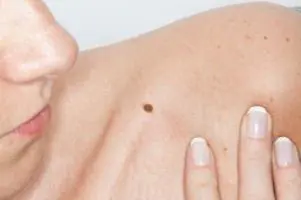
Cost of mole removal
The procedure discussed in our article is the simplest and safest way to help get rid of unwanted accumulations of melanin on the skin. That is why it has received such wide use. So how much does laser mole removal cost? The price of such a procedure directly depends on the size of the spot itself. The larger the mole, the more expensive it will cost to remove it. Also, the cost depends on the clinic where this mini-operation will be performed. Usually, in order to remove one small mole, you need to pay at least 1000 rubles. If the work area is large, then the cost can reach up to 3,000 rubles. Ultimately, the amount depends on the region, the qualifications of the doctor, and the reputation of the clinic where laser mole removal takes place. The cost can also vary depending on what equipment is used during the operation, the quality of anesthesia and a number of other factors. It should be noted that only moles are removed with laser for cosmetic purposes. Any tumor that is suspected of being malignant can only be removed surgically in a hospital.
So, in our article we examined in detail the topic of “laser mole removal.” Consequences, photographs and reviews are also given in the text - we hope this will help you decide on such a simple cosmetic operation or, on the contrary, think about it and refuse it.
Why are moles removed?
In most cases, moles are benign formations. At its core, it is an accumulation of cells with excess melanin in different layers of the skin. Nevi appear on any part of the body. The causes of active growth may be: hormonal imbalance, prolonged exposure to direct sunlight, pregnancy, puberty or menopause.
Indications for removal are the following factors:
- unaesthetic location of the mole;
- danger of degeneration into a malignant tumor.
The potential danger is that under the influence of external and internal factors, nevi can degenerate into skin cancer - melanoma. Therefore, if the growth begins to itch, hurt, peel, bleed and grow quickly, then you should immediately consult a doctor, dermatologist or oncologist. These are the first warning signs. For more information about when and by what signs a neoplasm becomes dangerous, read our article “Why do you need to remove moles?”
Laser mole removal
Today, laser removal is considered the most effective and safe method for removing moles, as well as warts, papillomas, atheromas, fibromas, hygromas, hemangiomas, etc. It is impossible to underestimate all the advantages and disadvantages of this method, because just a couple of decades ago, removal was carried out only with a scalpel, and the wound might not heal long enough, and in most cases a scar or a scar remained. Such consequences are especially unpleasant if the excision was on an open area of skin, for example, on the face.
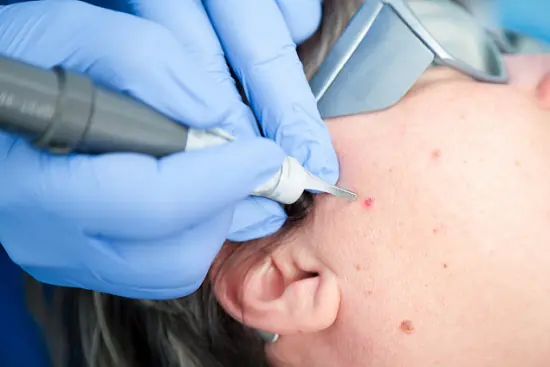
Laser beam is one of the most minimally invasive methods. It burns out the formation cells layer by layer and at the same time the doctor clearly controls the depth of penetration into the dermis. That is why the skin is minimally injured and healthy tissues are not affected.
The advantages of the procedure also include:
- Safety – there is no risk of infection;
- Painless – local anesthesia is administered before removal;
- Speed – removal lasts no more than 10 minutes;
- Short rehabilitation period;
- There is no risk of the tumor occurring again;
- No marks are left on the skin.
After complete excision of the mole, the doctor treats the wound with an antiseptic and applies a bandage. The applied bandage is also impregnated with special preparations that help the skin recover faster. It can be removed a few hours after the procedure.
Healing process and wound care
During the first 24 hours at the removal site, redness and swelling may occur; this is a normal reaction of the body. The rehabilitation period is divided into several stages, we will tell you about them in more detail:

— First stage: it lasts for the first 7 days after removal. A brown or black crust forms at the site of the mole; you cannot pick it or tear it off yourself. It performs a protective function, covering the wound from external influences and various infections. A new layer of healthy skin also forms under the crust. In the first days, it is very important to avoid rubbing or injuring the extraction site; you should not scratch the wound. It is necessary to limit contact with water, do not visit the pool, sauna and bathhouse. Drinking alcoholic beverages and coffee in large quantities is not recommended. If the mole was on the face, then in the first week it is better to do without cosmetics, creams and alcohol-containing lotions. The doctor may advise wiping the wound with a weak solution of potassium permanganate or disinfectants.
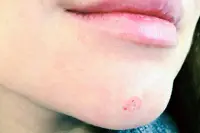
— Second stage: lasts from 7 to 19 days after removal. By the tenth day, the crust should fall off on its own, leaving soft pink skin underneath. For 5 days after peeling off the crust, this area should not be exposed to direct UV rays. When going outside, your skin must be lubricated with sunscreen and, if possible, covered with clothing. You should also not visit the solarium.
— Third stage: from day 20 onwards after the procedure. The formation of new skin at the site of the removed nevus is completed. At this stage, you can still feel a small depression (up to 1 mm) in the skin. However, it heals quite quickly, and in most cases, no specialized care is required at this stage. If during this period you experience itching or peeling, but the removal site looks healthy, you should contact the specialist who performed the procedure. He should recommend a soothing ointment. By day 30, the skin should be completely restored, without visible marks on the body.
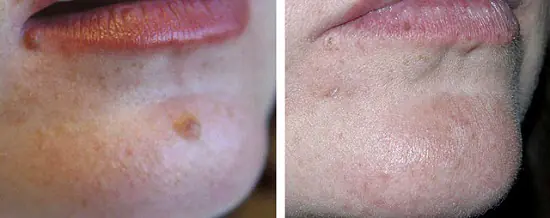
Are there any complications?
In most patients, laser removal of tumors goes well, without any complications. However, if you neglect the general and individual recommendations of the doctor, do not monitor the wound and expose it to external influences, then unpleasant consequences are likely to occur. Much also depends on the chosen clinic and specialist. An experienced, qualified physician will not make mistakes during the procedure.
If after removing the crust from the wound for several days you observe:
- redness;
- itching;
- edema;
- pain on palpation;
- strange discharge from the wound.
You should immediately consult a doctor; perhaps an infection has occurred, and the wound must be cleaned urgently. Read about what complications are possible after removal of tumors in our special article “Complications after removal of moles.”
Mole removal has become widespread recently. This is due, first of all, to the advent of modern methods of destruction in our lives, with the help of which we can easily and quickly get rid of an unwanted nevus. Care after mole removal has its own characteristics. In this article you will learn how to care for a nevus after its removal.
When should a mole be removed?
If a mole changes shape or surface structure, becomes uncomfortable, is damaged, or is too exposed and vulnerable, it is recommended that it be removed. It should be remembered that a mole is not always a harmless purely aesthetic problem. A consultation with a dermatologist is required, who will examine the mole using a dermascope and determine whether it needs to be removed and how. Unnecessarily removing all moles in a row is not beneficial to health and can leave scars on the body. Contraindications to mole removal are exacerbations of chronic diseases, unhealthy appearance of the skin area around the mole, as well as cardiovascular diseases.
How is mole removal done?
The procedure for removing tumors is based on the principle of photoselectivity: different components of biological tissue absorb light waves of a certain length differently. Thus, for a carbon dioxide laser, the target (chromophore) is water molecules. Since a living cell consists of approximately 76% water, when radiation is absorbed, the radiation energy is converted into the internal energy of water molecules with their instant evaporation, i.e. the neoplasm cells are not burned out (as many naively assume), but rather evaporate. A specialist, acting on a mole or any other neoplasm with a laser, removes it layer by layer from the surface of the skin.
To remove tumors that have a vascular component, a Synchro FT neodymium laser (“DECA”) is used, which coagulates the vessels that ensure the growth of this unwanted formation.
Contraindications
The tumor removal procedure is not applicable to some malignant tumors. Therefore, when indicated, a cytological or histological examination is ALWAYS performed!
Preparing for the tumor removal procedure
If a tumor is removed with a CO2 laser, the doctor uses local anesthesia for the patient’s comfort.
Mole removal methods
Electrocoagulation. Removal of moles by this method is carried out using a special surgical coagulator. Local anesthesia is used. The mole is cut off by high frequency current, which simultaneously solders the tissue. This avoids bleeding and infection of the wound. After electrocoagulation, the cut material can be examined. A small crust forms at the site of the mole, falling off after 7-10 days, sometimes leaving a barely noticeable scar. The method is effective for removing small moles on the face and body.
Cryodestruction. For moles that involve only the upper layers of the epidermis, removal with liquid nitrogen - cryodestruction - is suitable. Removal of flat moles is carried out with a cotton swab, which is pre-wetted in liquid nitrogen. The application lasts no more than 3 minutes. During the procedure, a slight numbness is felt at the site of treatment, but there is no pain. In case of deeper germination of moles, a cryodestructor is used. A special ultra-thin needle with a temperature sensor is inserted deep into the skin. After insertion, the needle is cooled to a predetermined temperature and removed almost immediately. In the first few days after the procedure, a rejection reaction of the treated pigmented tissue begins. A crust forms, which falls off and heals within a month and a half. The procedure is contraindicated in case of individual intolerance to cold.
Laser removal of moles. The tool for removing a mole in this case is a powerful light beam, which destroys its cells and evaporates them from the skin. Neighboring tissues are not affected, so burns are excluded. The procedure is bloodless and is performed under local anesthesia.
The tissue evaporation treatment is carried out in layers and is completed to achieve healthy skin without touching it. A crust forms at the treatment site after a few days, which disappears after one to two weeks.
Radio wave removal of moles. Removing moles with a radio knife is a non-contact, non-traumatic method based on the possibility of coagulation and tissue cutting with high-frequency radio waves. It is characterized by rapid healing - the crust disappears after a week. Contraindications to radio wave removal of moles are the presence of a pacemaker in the patient, as well as herpes and a feverish condition.
Surgical removal of moles. The most reliable method, suitable for removing large formations against which other methods are powerless, as well as “hanging” moles. Removal of dangerous moles is best done surgically.
The procedure has virtually no contraindications and is performed under local anesthesia. The mole is excised with a scalpel and removed, including a small area of healthy skin. The surgery may leave a large scar that will take several weeks to heal. Although the procedure is quick, the wound requires care for a long time. To remove small moles on the face, it is wiser to choose other methods, if possible.
"Folk" methods. Currently, many different natural-based ointments are advertised, designed to eliminate skin defects - warts and moles. They can be bought without a prescription or a doctor's prescription, but the responsibility for the effect produced will lie solely with you. It is better not to risk using such a product to remove moles, but to consult a doctor. It is strictly forbidden to cut or burn moles yourself.
Cost of procedures
Prices for mole removal depend on their size, the chosen method and the pricing policy of the medical institution. Removing a mole with a diameter of up to 0.5 cm costs from 300 to 3000 rubles, for a larger diameter – from 600 to 6000 rubles. Surgical removal is the most expensive, and the most inexpensive method is cryodestruction. Do not forget about the need for an initial consultation with a dermatologist, the cost of which ranges from 600-1200 rubles. depending on the chosen clinic.
Benefits of tumor removal
Laser removal of skin defects, such as moles, using a fractional CO2 laser has a number of advantages:
- Absolute sterility of the procedure, because the procedure is contactless, i.e. no additional sanitation required;
- The laser beam of both CO2 and neodymium laser provides coagulation of blood vessels at the site of exposure, i.e. the procedure for removing tumors is absolutely bloodless;
- Features of the SmartX laser >Results of tumor removal
With laser mole removal, results are immediate. With the necessary care, healing of the site of a former mole occurs very quickly, almost imperceptibly, and the positive result lasts for life.
The likelihood of developing unforeseen consequences after removing a mole
Laser correction of moles is one of the safest ways to get rid of nevus, avoiding complications and unforeseen consequences. A beam of directed light radiation literally evaporates the pigmented cells of moles, which is visually manifested by the complete removal of the epidermal formation in just a few minutes. Minimization of negative consequences occurs due to the following objective factors.
- The laser beam acts in a strictly targeted and selective manner, without injuring healthy skin structures, which allows the technique to be used even to remove the smallest nevi in the eyelid area and mucous membranes;
- There is virtually no risk of infection, since the laser exhibits a powerful antibacterial and antimicrobial effect, protecting the wound surface from infection;
- Laser destruction is not accompanied by bleeding or hemorrhage, since during the manipulation process all blood capillaries supplying the body of the mole undergo thermal coagulation;
- The laser activates regenerative processes in the skin, which significantly accelerates wound healing;
- The technique is low-traumatic, which avoids the formation of connective tissue and all the negative consequences associated with this factor.
Despite the safety of the method, it should be borne in mind that before the procedure it is necessary to carefully study the list of contraindications, since the consequences and complications of laser correction most often result from neglect of this list, which includes the following conditions:
- Pregnancy;
- Acute infectious process;
- Oncology of any localization;
- Inflammation in the intended area of laser exposure;
- Period of menstruation in women;
- Immunodeficiency;
- Exacerbation of chronic pathologies;
- Hyperthermia.
Current issues
Most patients, after undergoing a laser mole removal procedure, observe some characteristic reactions of the body during the first two weeks, some of which are normal responses that are compensatory in nature. Let's consider several pressing issues regarding the consequences of removing nevi on the face and body.
Can cancer occur after mole removal?
Skin cancer, or melanoma, usually develops as a consequence of the malignant transformation of a melanoma-prone mole. Moreover, if during the laser correction process the specialist incorrectly determined the required depth of the beam and did not completely remove the mole, the risk of developing melanoma increases.
After removal, a tubercle appeared.
Despite the low-invasiveness of the technique, in the process of removing the nevus, healthy surrounding tissue remains, which will have to undergo the healing process of the wound surface that has formed in place of the mole. In this case, this zone can form a small tubercle, which will be covered with a dense crust in a few days. This is considered a normal reaction to manipulation.
Inflammation after removal of a birthmark.
The inflammatory process after laser correction usually lasts for the first days, after which it goes away. If inflammatory signs persist for a long time, you must immediately contact the specialist who performed the procedure.
Can a scar or scar form after removal of a nevus?
The formation of scars can only be observed in the case of forced premature removal of the protective crust from the wound surface.
The scar itches and hurts after mole removal.
Itching, burning, peeling and redness around a mole after removal are characteristic symptoms of a burn, which can be caused by unprofessional work of a doctor. This unpleasant complication develops if the specialist incorrectly determined the depth of exposure and subjected healthy skin cells to laser burning.
Care after laser mole removal
If the laser ablation procedure was performed by a qualified specialist, the risk of side effects is minimal, but the patient will also have to follow certain post-procedure rules, listed below.
- It is necessary to provide rest to the wound surface, without injuring it by friction of clothing or shoes, and also by taking care of the protective crust;
- Contact of the wound with water should be avoided for two weeks after manipulation;
- It is recommended to protect the skin surface from direct sunlight, and also use creams with a high UV protection factor. To the question of when you can sunbathe after removing a mole, the answer will be at least three weeks;
- You cannot use ointments, creams and gels for healing on your own without a doctor’s prescription;
- The procedure area should be protected from any mechanical damage, carefully protecting the integrity of the protective scab.
Laser removal – one of the simplest and least traumatic methods of destruction of moles. Compliance with simple rules of rehabilitation will allow you to avoid scars, cicatrices and other unpleasant consequences and obtain an ideal physiological and aesthetic result.
How to properly care for moles after removal
After laser removal of a mole, you should follow a number of restrictions and doctor’s recommendations for skin care:
The area of skin treated with the laser should be protected from direct sunlight. Therefore, the procedure is strongly not recommended for those planning to go on vacation or on a business trip to sunny countries soon. This does not mean that moles cannot be removed in the summer. Moles can be removed at any time of the year, but in the summer you need to apply a special hypoallergenic sunscreen to the area where the mole was, which can cause discomfort to the patient if the mole was inconveniently located.
Since the effect of ultraviolet rays on the skin after mole removal is extremely negative, the use of solariums is also strictly prohibited. In the first 10 days after the procedure, the skin is very delicate and requires special care. Reduce the possibility of injury and bruises in the area where the mole was to a minimum. Otherwise, a bruise or cut in this area will take much longer than usual and cause discomfort to the patient. If the removed mole was on the face, you should avoid wearing makeup on that area. For example, after removing a mole on your cheek, you can paint your eyebrows, eyelashes, lips, but you should not use powder or foundation that covers the skin of your entire face. Usually, in the first week after removing a mole, a darker spot different from the rest of the skin color remains in its place, which makes you want to hide it under a layer of tinting agent.Caring for a mole after laser removal is not as difficult as it seems. The technique itself reduces the likelihood of complications to a minimum. The procedure is safe, and the risk of tissue scarring is also minimal (about 1 percent). However, each case requires an individual approach, so you should consult with a specialist before the procedure.
Following the general recommendations described will help you avoid the consequences of improper care for a removed mole. Your recovery will be quick and unnoticed even by you.



